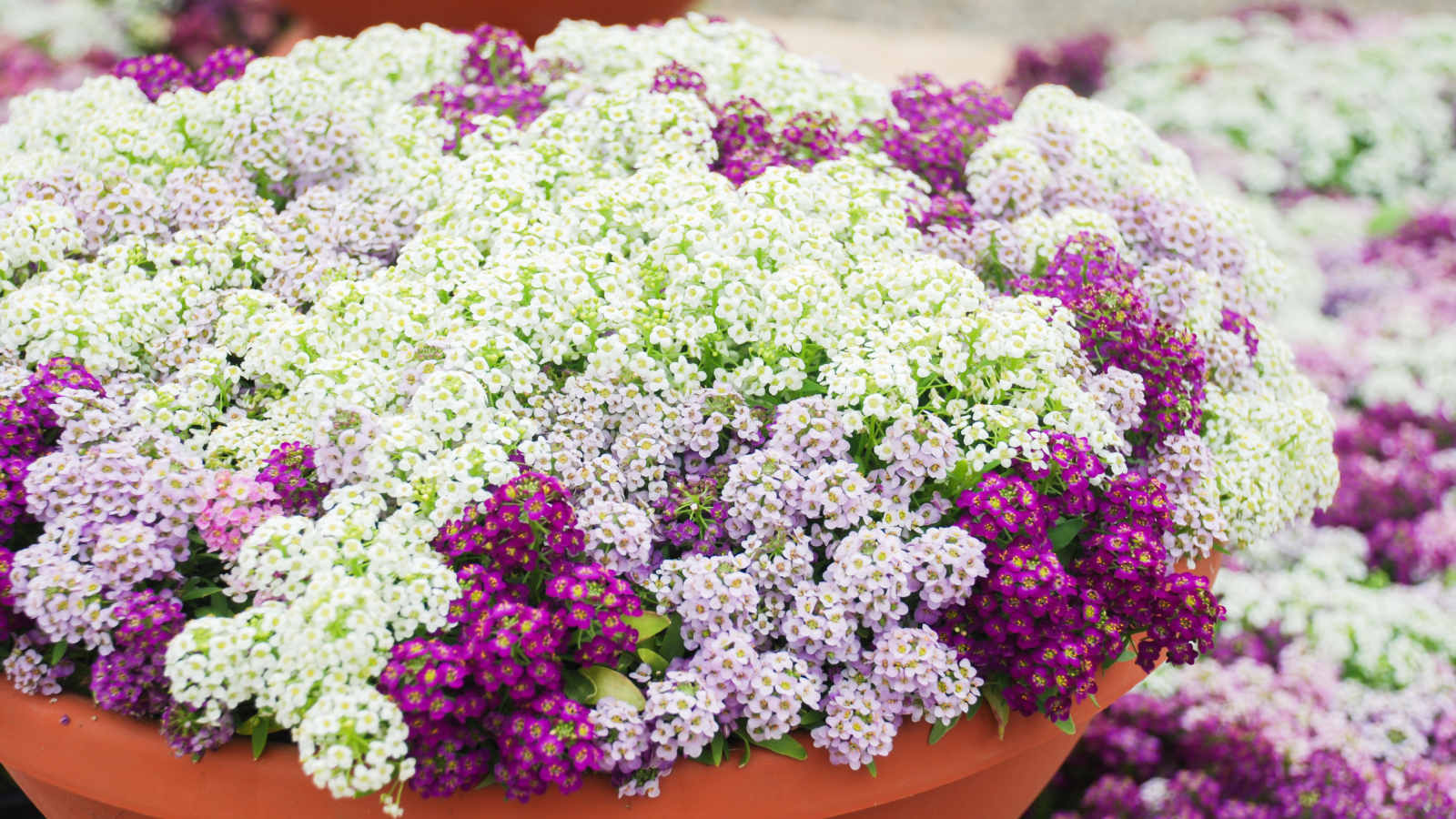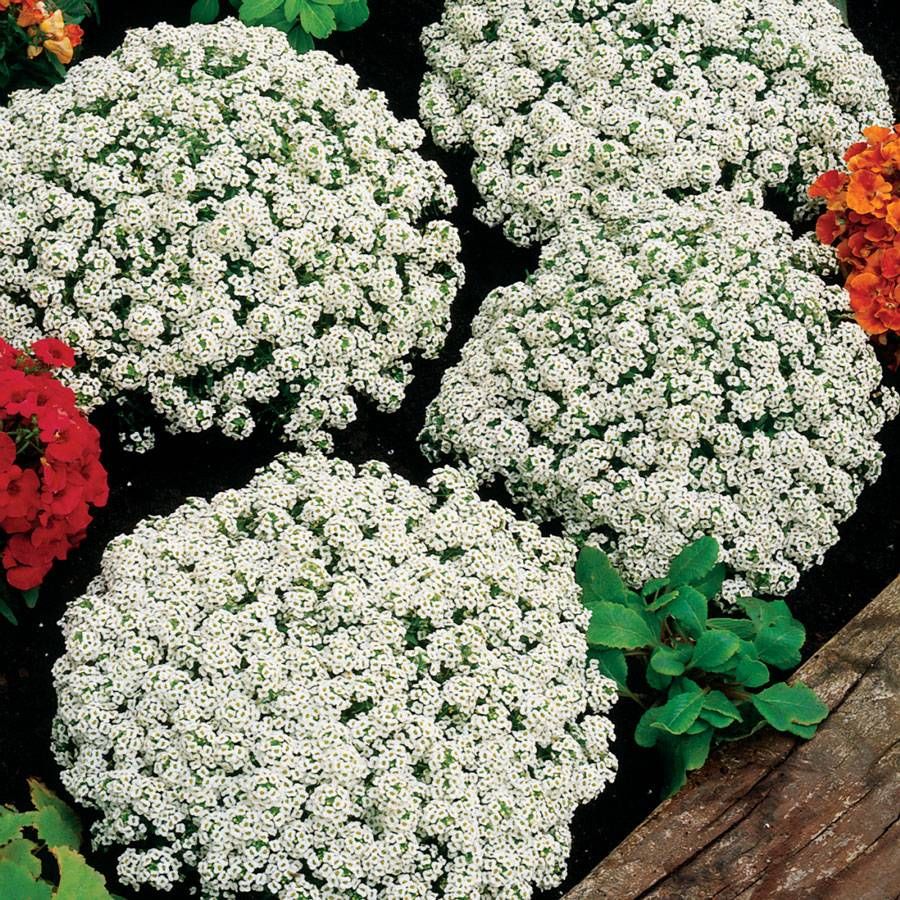Sweet Alyssum: Complete Plant Care And Growing Guide
Delicate and pretty sweet alyssum flowers are perfect in borders and pollinator gardens. They love sunlight, but not extreme heat.

Quick Facts
Botanical name: Lobularia maritima
Height: 3-10 in.(7-25 cm.)
Spread: 5-12 in. (12-30 cm.)
Sun exposure: Full Sun, Part Shade
Soil requirements: Neutral, Slightly Acidic
Hardiness zones: USDA Zones 5-9
When to plant: Spring, Fall
Sweet alyssum is a great addition to the home landscape. Known for its immense flurry of blooms, the plant is valued for its ornamental value and its unique ability to attract beneficial insects. In this article, we will explore the basic needs of this beautiful plant in greater detail.
Sweet Alyssum Care
Alyssum are known for their delicate flowers and ease of care. They are great for filling empty spaces in your garden or lining walkways as a beautiful border. Sow your seeds in the spring and enjoy these little beauties all summer long.
Light
If you’d like to plant alyssum in your garden you should first consider their light needs. Alyssum grows best where it can receive ample sun throughout the day. However, when grown in regions that are especially hot, alyssum generally benefits from afternoon or part-shade conditions. Though these plants can grow in shaded beds, too much shade may cause a notable decrease in the production of flowers as well as legginess.
Water
Alyssum is well adapted to a wide range of growing conditions, including drier soils. Still, the plants will require routine irrigation throughout the growing season.
Plants grown in containers or warmer climates require water much more frequently. Careful monitoring throughout the summer is important to keep consistent soil moisture and the best possible flower production.
Temperature & Humidity
Alyssum is a good choice for those who live in cool climates. Under cooler conditions, you can expect the flowering period to extend throughout the season. However, periods of high heat and humidity may cause the plant to stop blooming during the height of summer. Most alyssum plants will recover with the arrival of fall and milder temperatures.
Soil
Like many types of flowers, sweet alyssum appreciates garden soil that drains well. Since it’s able to thrive among a wide range of soil types, it can be grown easily in beds that are either neutral or slightly acidic. The overall nutrient content of the soil also plays a key role in the plant’s health and production of flowers.
Sign up for the Gardening Know How newsletter today and receive a free copy of our e-book "How to Grow Delicious Tomatoes".
Fertilizer
Alyssum plants are appreciated for their ability to grow and spread throughout beds with less-than-ideal soil fertility. Growing the plant in especially rich soil may lead to lush, green plants that produce very few flowers. If you do wish to fertilize alyssum plants, do it annually with a well-balanced, slow-release feed.
Problems, Pests & Diseases
Sweet alyssum plants are generally free of disease. However, fungal issues and stem rot may occur in beds that drain poorly or have been overwatered.
Though aphids can sometimes become a problem, healthy alyssum plantings are likely to attract a wide range of beneficial insects that commonly combat them. As always, we discourage the use of chemicals or pesticides.
How to Grow Sweet Alyssum from Seed

Though most alyssum plants are grown as annuals, they are actually a short-lived perennial flower. Sweet alyssum can be started in either spring or fall, depending upon your growing zone. You can successfully sow the seed directly into prepared beds or start them indoors.
With direct sowing, each seed should be covered only slightly, as alyssum will benefit from exposure to light throughout its germination period. Under ideal conditions, seeds should begin to germinate within one week. Seedlings started indoors should be gradually hardened off before being moved outside.
Pruning
Alyssum plants do not require pruning. However, you may wish to trim the plants in order to maintain their desired size or enhance their overall appearance. Trimming alyssum in mid-summer will help to encourage flowering throughout the fall. Cutting back alyssum at this time can also be done as a means to prevent the seeds from setting.
Propagation
As alyssum will grow easily from seed, it is commonly saved in this manner from season to season. Open-pollinated or heirloom varieties will reliably produce plants that are very similar to their parent. Alyssum can also be propagated by cuttings. This is especially useful for producing newer, hybrid types that may otherwise be difficult to obtain.

Varieties
Here are a few of our favorite varieties of sweet alyssum:
'Carpet of Snow' Alyssum
'Oriental Nights' Alyssum
'Rosie O’Day' Alyssum
'Tiny Tim' Alyssum
Landscape Uses
This pretty and delicate plant makes an excellent addition to borders, beds, and containers. Alyssum borders are ideal near paths and porches. As a valuable groundcover, experts take special note of its use in companion planting and its role in thriving pollinator gardens.
Frequently Asked Questions
Does Sweet Alyssum Come Back Every Year?
Alyssum will return to your garden beds, provided they are grown within their hardiness zone. Though cultural factors play a major role in determining whether or not the plant will come back, those that have been allowed to produce seed will germinate readily. This often results in the illusion that the plants have returned, even in zones beyond their hardiness range.
How Do You Keep Alyssum Blooming All Summer?
Alyssum will continue to bloom throughout the summer where conditions remain cool. In warmer regions, bloom time can be extended by planting it in beds that are shaded during the hottest parts of the day. You can further encourage flowering by trimming back each plant after it blooms to promote new growth.
This article features products available from third-party vendors in the Gardening Know How Shop.

Bonnie Grant is a professional landscaper with a Certification in Urban Gardening. She has been gardening and writing for 15 years. A former professional chef, she has a passion for edible landscaping.


